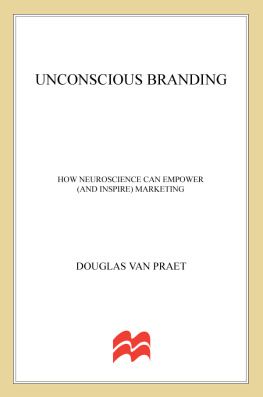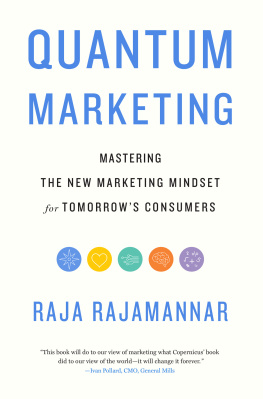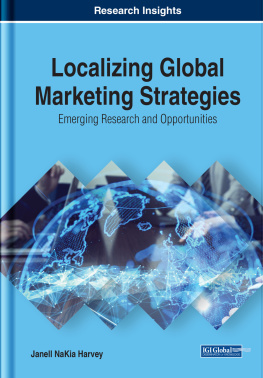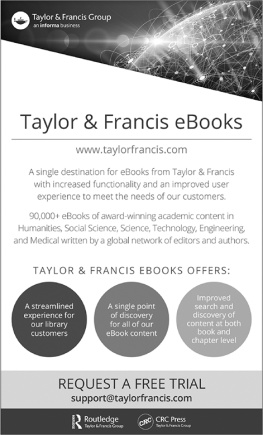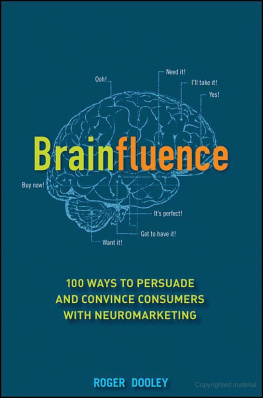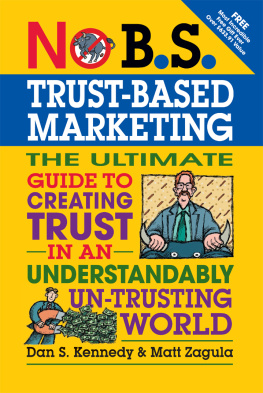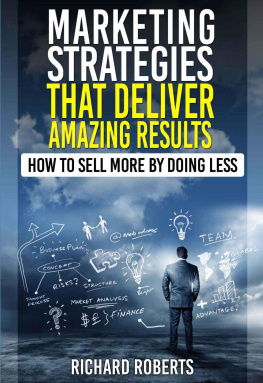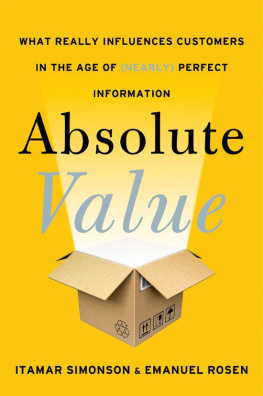UNCONSCIOUS
BRANDING
UNCONSCIOUS
BRANDING
HOW NEUROSCIENCE CAN EMPOWER (AND INSPIRE) MARKETING
DOUGLAS VAN PRAET

The author and publisher have provided this e-book to you for your personal use only. You may not make this e-book publicly available in any way. Copyright infringement is against the law. If you believe the copy of this e-book you are reading infringes on the authors copyright, please notify the publisher at: us.macmillanusa.com/piracy.
UNCONSCIOUS BRANDING
Copyright , Douglas Van Praet, 2012.
All rights reserved.
For information, address St. Martins Press, 175 Fifth Avenue, New York, N.Y. 10010.
First published in 2012 by PALGRAVE MACMILLAN in the United Statesa division of St. Martins Press LLC, 175 Fifth Avenue, New York, NY 10010.
ISBN: 978-0-230-34179-1
Our eBooks may be purchased in bulk for promotional, educational, or business use. Please contact the Macmillan Corporate and Premium Sales Department at 1-800-221-7945, ext. 5442, or by e-mail at .
Library of Congress Cataloging-in-Publication Data
Van Praet, Douglas.
Unconscious branding : how neuroscience can empower (and inspire) marketing / Douglas Van Praet.
pages cm
ISBN 978-0-230-34179-1 (hardback)
1. Consumer behaviorPsychological aspects. 2. Marketing Psychological aspects. I. Title.
HF5415.32.V36 2012
658.8342dc23
2012014890
A catalogue record of the book is available from the British Library.
Design by Letra Libre Inc.
First edition: November 2012
10 9 8 7 6 5 4 3 2 1
Printed in the United States of America.
To my parents,
Marie-Louise and Robert
INTRODUCTION
When Freud discovered his sense of the unconscious, it had a vast effect on the climate of the times. Now we are discovering a more accurate vision of the unconscious, of who we are deep inside, and its going to have a wonderful and profound and humanizing effect on our culture.
David Brooks, TED, March 2011
SEVERAL YEARS AGO, IN SANTA MONICA, CALIFORNIA, I stood at the front of a large hotel conference room filled with marketing executives and advertising professionals and told them that consumers were not in control of their brand choices. The audience looked at me as though I had two heads. But what was mind-boggling to marketers was a no-brainer to any cognitive scientist, because to a certain extent, my colleagues were right: We do all have two heads.
Though Freud popularized the psychological distinction between the conscious and unconscious minds nearly a century ago, only in recent decades has science begun to unravel the biological mysteries of the human brain. Humans operate from two separate and often contentious cognitive systems and the mind that drives most of our behavior is ironically the one unbeknownst to our selves. A deluge of research in recent years about the emotional, irrational, and unconscious dimensions of decision making has vindicated my controversial stance: consumers, i.e., humans, make most of their decisions in life quite unconsciously. We are just beginning to understand how this research applies to the choices we make in everyday life, but what science is finding will fundamentally change both how we sell and how we buy.
For too long, marketers have been asking the wrong question. If consumers are making their decisions unconsciously, why do we persist in asking them directly through market research why they do what they do? Its like asking the political affiliation of a tuna fish sandwich. Its not that consumers are intentionally trying to deceive or are even reluctant to share their opinions. They simply cant tell us because they dont really know.
Before marketers develop strategies, they need to first recognize that consumers have strategies too... human strategies, not consumer strategies. These ways of thinking lead to a set of neurological and behavioral steps with a process, sequence, and structure rooted in our biology and evolution, not just in our culture and marketplace. And they are steps that can be uncovered and harnessed at will to guide and inform marketing and advertising strategy. As marketers, we need to go beyond asking why and begin to ask how. We need to shift from just measuring the outward expressions of beliefs and attitudes to better understanding the inward processes and real behavioral causes behind them. That is, how do the minds of people process information, structure their experience, and form the often-unconscious beliefs and motivations that drive their behavior?
When my mother goes to the supermarket and pulls one of the last boxes of Tide powder from the shelf, she is demonstrating what cognitive scientists have long theorized: that the moment she stands in the detergent aisle and reaches out for that box, her brain is processing decades of memories, nostalgia, the scent of her childrens clothes, and the day she did her husbands laundry in their first new home. She doesnt buy the same brand just because it works or because its cheaper; she buys it because it triggers a deep and neurologically seated process of behavior.
Unfortunately, businesses have long based their marketplace knowledge on culture and economics and not on the truths of biology and brain evolution. They have borrowed heavily from the social sciences while virtually ignoring the natural sciences, leaving so much fertile ground with woefully few farmers. This new shift from a cultural to a biological view of behavior is one of the most exciting and promising opportunities in the history of humanity. In fact, as this book will demonstrate a majority of the most outward, pervasive, and economically significant manifestations of our culturesuch as our media, the television shows we watch, the movies we love, the advertising that moves us, and the products and services we buy every dayhave clearly explainable neurobiological determinants.
Throughout my career in marketing and advertising, I have worked on every side of the market research and strategic planning industries, most recently at Deutsch LA, the award-winning, nationally leading advertising agency. Our clients include premiere industry marketers such as Volkswagen, Target, Sony PlayStation, HTC, Dr Pepper, and Snapple. What I have seen is that those advertisers and campaigns willing to take risks, to make creative leaps beyond the instruction of market research, and to act with instinct and intuition have proven the most fruitful. While these marketers discovered that we couldnt rely on the research alone, they also couldnt articulate the process of their gut feelings and their imaginative insights.
In addition to being a marketing practitioner, I supplemented my understanding by becoming a behavior change therapist working with clients of a different sort. In the age of technology, marketers are at risk of becoming out of touch with the real-life, flesh-and-blood needs and challenges of peoplenot consumers. I learned how to help everyday people like you and me who were interested in changing their lives and their behavior... not because of emotional illness but because of a desire for self-improvement and a more fulfilling lifethe same things people seek in brands. And through that work, I noticed firsthand how the unconscious was the key to that change.
I became fascinated by the deeper worlds inside people. I became intrigued by how, unlike marketers, therapists always sought the hidden meaning, never hanging on the words of their customers as gospel truth. I learned to discern the subtleties of nonverbal communication, body language, and unconscious micro-expressions of emotions. Having studied at a college and clinic of behavioral science specializing in understanding unconscious motivation, I became certified as a hypnotherapist. I gained access and profound insight into behavioral-change techniques that often entail a fraction of the time and effort of other traditional psychological methods. Many of these esoteric, intuitive, revolutionary techniques were corroborated and deepened through my investigations of the neurosciences, including cognitive science, neurobiology, evolutionary psychology, and behavioral economics. So I began reverse engineering what I learned from all these disciplines, starting with the things that were proven to yield real results quickly in real people. I created a seven-step process to change behavior, one that I have been applying to marketing and advertising strategies with remarkable success ever since.
Next page
